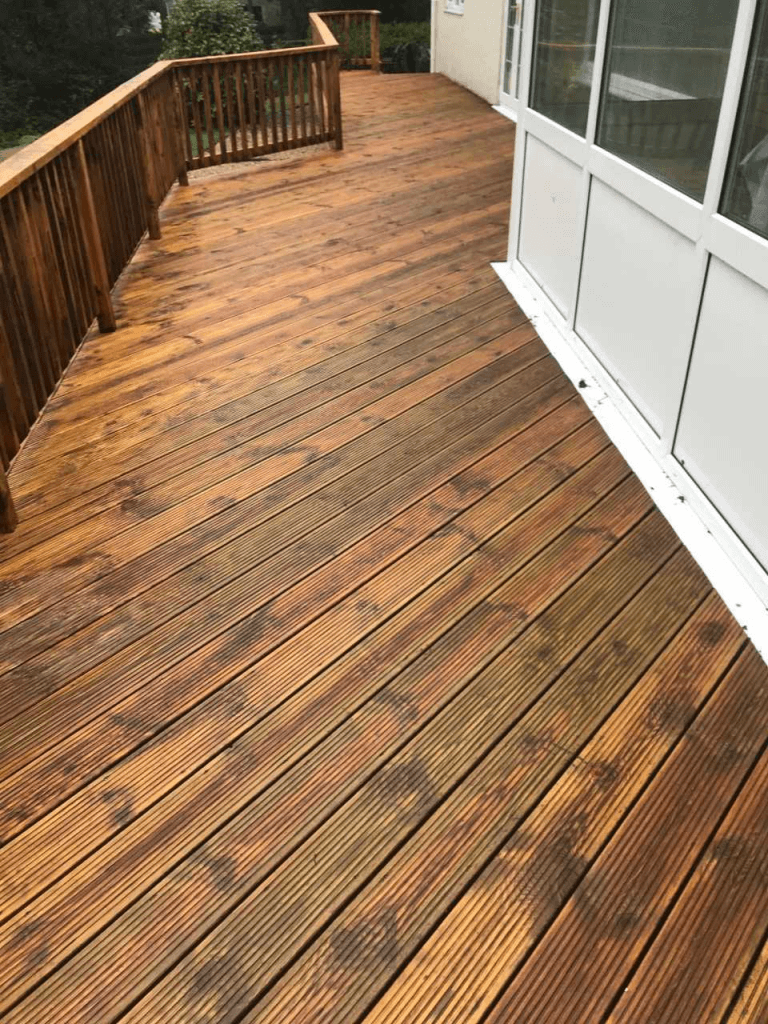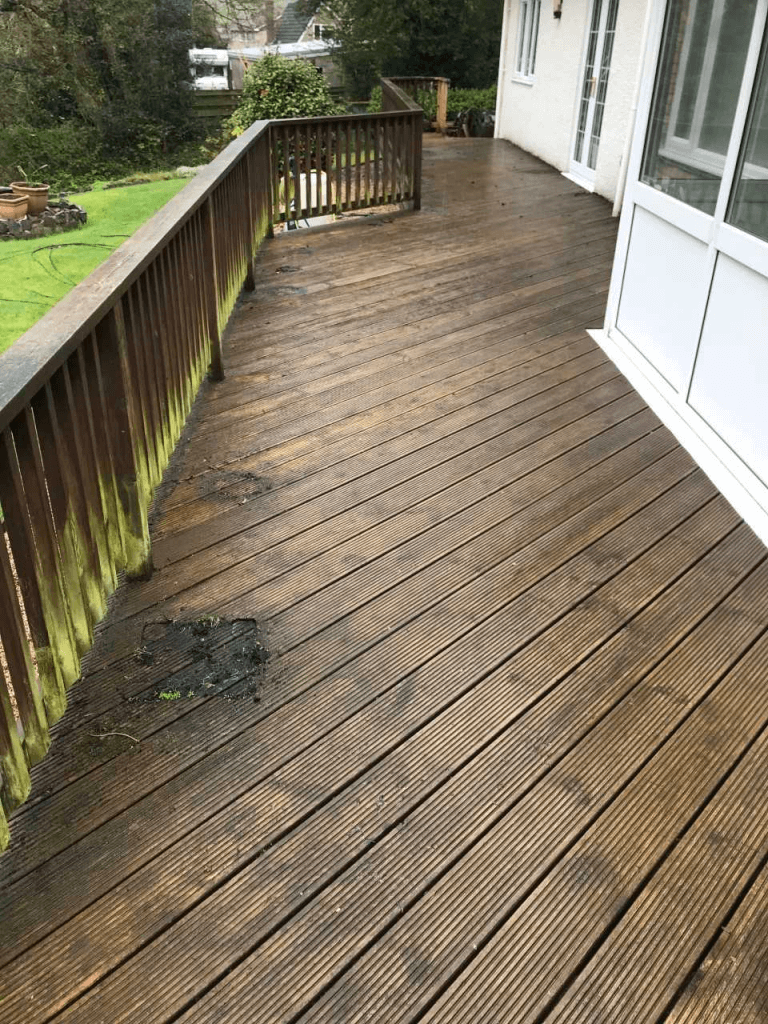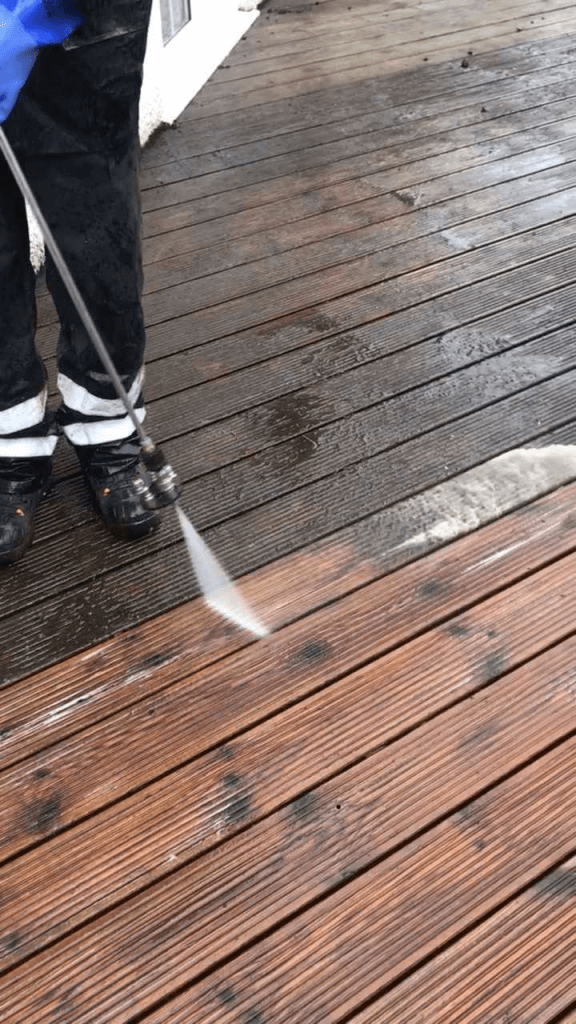
After Cleaning 
Before Cleaning
How to deal with slippery decking in the garden
Timber deck can be a challenge to keep clean and can often become a slip hazard especially in shaded areas. As wooden deck is generally quite absorbent it holds water so it can encourage the growth of algae, moss and fungus, this can create a slimy surface under foot and can quite easily catch a person out as it can be as slippery as ice.
Properly cleaning and maintaining slippery decking requires some care as pressure washing and using certain chemicals can damage the wood splintering it, if too much pressure is used or the wrong kids of nozzles. Bleach based chemicals can destroy the lignin fibres in the timber and cause irreversible damage. When the fibres of the wooden deck are damaged in this way then rot can more easily set in, rot is the biggest enemy of timber decking and can make it unsafe to walk on and it will need replacing.
The good news is that taking some and quick maintenance precautions can remove the slip hazard by keeping the deck slime free and preserved, by taking a few simple steps standard pressure treated softwood decking should be able to have a serviceable life of around 30 years and hardwood decking can last far longer.
Step 1 Keep the deck as dry as possible, remove any pots or furniture that could trap water on the decking causing rot. It’s especially important not to leave plant pots directly on the deck over the winter. Ensure the deck supports are not sitting in damp ground and the posts are set in a full concrete bed.

Step 2 Annually clean away any “slime” that has accumulated on the decking. The best way to do this is with a very light pressure wash using quite low pressure and a very wide fan jet. It may be best to ask a competent pressure washing company to do this if you are not sure about the appropriate pressure and nozzles to use.
Step 3 Treat the deck with a Biocidal and fungicidal treatment to kill the growth and spores of algae and fungus, this will prevent these slimy growths and will prevent any moss or Lichen from developing.
Step 4 Don’t be tempted to paint the deck. Painting with brown wooden coloured products could seem to be an answer to repel moisture and protect the decking but unfortunately the opposite can be true as paint type products tend to hold moisture under the surface and prevent the timber from breathing. They can split and degrade and the flakey result can look very unsightly with no quick way to resolve.
Step 5 Occasionally moisturise. Depending on the type of timber the above steps will usually result in a naturally greyed finish to softwood timber decking. This is usually quite attractive. Should you wish to brighten the decking to restore warmer tones a deck restoring product followed by penetrating deck oil can achieve this. The result will be temporary as the colour will return eventually to the naturally greyed tones however the oil may help preserve the timber.
Hardwood decking such as Ipe, ballau etc are becoming very popular due to their durable and beautiful finish. This kind of decking deserves a little bit of specialist maintenance to keep it looking fantastic.
Feel free to contact us should you require any advice on maintaining your decking.
